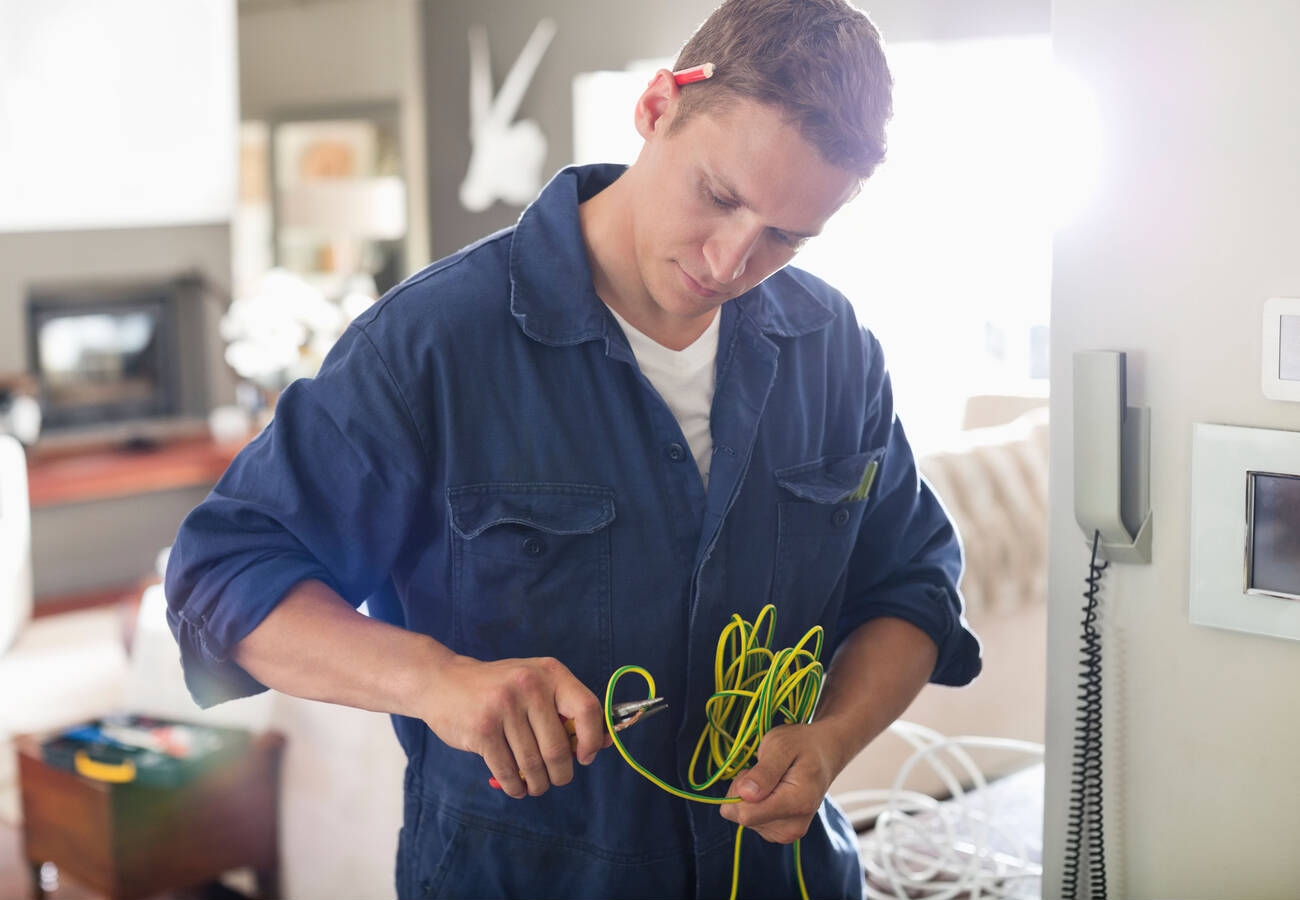Have you ever walked into an older property and quickly wondered if the lights, switches, or electrical outlets were truly safe to use? Do you find yourself doubting the authenticity of that old wiring lurking within the walls? If these questions strike a chord, you’re not alone. Many homeowners, especially those in mature suburbs, are increasingly concerned about electricity safety when it comes to older houses and buildings.
In this post, we’ll investigate how to spot and tackle common electrical risks found in older homes. We’ll explore everything from flickering lights to the differences between outdated wiring and a modern switch electrical wiring setup. Plus, we’ll discuss what an electrical safety switch can do and why calling a domestic electrician is so important. By the time you finish reading, you’ll have a clearer picture of the potential hazards, the importance of regular checks, and the steps you can take to help keep your property safe and compliant with Australian standards.
Whether you’re renovating a classic Federation home or you’ve just moved into a vintage Queenslander, this guide will give you the essential info you need to protect your family and property. You’ll learn about safety electrical devices, proper maintenance, and the role of professional inspections. Let’s dive right in and shed light on how to safeguard your at home electrical systems in older buildings.
Introduction to Electrical Safety in Older Homes and Buildings
Electricity Safety Matters for Older Properties
Older homes often feature wiring that was installed decades ago. While these setups might have stood the test of time, they weren’t built with today’s electrical demands in mind. Modern households typically rely on a huge array of appliances—televisions, computers, mobile chargers, air conditioners, and more. Outdated wiring can quickly become overloaded, creating a serious risk of electrical fires or shocks.
What’s more, older wiring systems may not include key safety features that are now standard under Australian regulations. Without an electrical safety switch, even a minor fault can escalate rapidly. This alone explains why a careful look at any at home electrical setup in an older building is so important. Ultimately, sound electricity safety practices help preserve not only your physical property but also the wellbeing of everyone inside.
Common Misconceptions About Home Electrical Issues
One prevalent misunderstanding is that if a system still “works,” it must be safe. In reality, older wiring can perform without obvious issues yet remain a ticking time bomb. Also, some people think minor flickers or discoloured outlets are simply a quirk of an old house. However, these can be glowing red flags that you need a domestic electrician.
Another misconception is that do-it-yourself fixes are enough to handle older wiring. Despite all the helpful videos online, there’s no substitute for a qualified professional. When it comes to electricity safety, guesswork or experimentation can be a dangerous path. Getting the right knowledge and inspections is vital.
Identifying Unsafe or Outdated Home Electrical Systems
Warning Signs: Flickering Lights, Discoloured Outlets, and Odours
Flickering or dimming lights can be a telltale sign of faulty wiring or an overloaded circuit. Some homeowners also complain of buzzing or crackling noises around light switches or in the walls. Discoloured outlets—especially ones with browning or a burnt appearance—are another serious red flag that demands immediate attention.
Beyond visual clues, odd smells can also point to home electrical issues. A burning or plastic-like odour might indicate that wires or components are overheating. If you notice any persistent odour around outlets or fuse boxes, switch everything off in that area and call a domestic electrician at once.
The Dangers of Overloaded Circuits
These days, it’s common to plug in multiple devices at the same time, from laptops to heaters and smart gadgets. However, many older circuits just weren’t made for this level of electrical demand. Overloaded circuits can overheat, melt insulation, and even spark fires. This is why you might see frequent tripping of circuit breakers, blown fuses, or unusually warm switchboards.
Overloading also affects the lifespan of your wiring. Wires forced to carry more current than they’re rated for will degrade faster. Meanwhile, homeowners may keep resetting breakers without addressing the underlying issue. Opting for an upgraded switch electrical wiring setup, designed for modern needs, can significantly lower the chances of an overload.
Understanding Switch Electrical Wiring and Its Role
How Switch Electrical Wiring Can Affect Electricity Safety
Switch electrical wiring refers to the wiring that connects and controls light fixtures, power sockets, and other devices through switches. While it might sound straightforward, each component must be carefully installed to ensure proper functionality and safety electrical practices. In older homes, the switch wiring can be frayed or use materials now considered outdated.
If the wiring behind switches is compromised in any way, you could be at risk of electric shock when turning lights on or off. Also, the switch may heat up if the wiring isn’t sufficient for the current load. By ensuring your switch electrical wiring is upgraded or well-maintained, you reduce the likelihood of sparking and circuit overload.
Upgrading Wiring for Improved Efficiency and Safety
Upgrading switch electrical wiring is often a wise move for older homes. Newer wires are made from insulation materials that hold up better over time, safe enough for modern usage. Up-to-date wiring also extends the capacity of your circuits, cutting down the risk of overloading.
Another advantage of modern setups is the addition of safety devices like Residual Current Devices (RCDs) or other electrical safety switch technology. When properly coupled with fresh wiring, such devices significantly improve electricity safety. Although rewiring a home can be a significant investment, it is vital for reducing hazards and boosting the overall reliability of your electrical system.
The Importance of Installing an Electrical Safety Switch
How an Electrical Safety Switch Keeps Your Home Safe
An electrical safety switch, or RCD (Residual Current Device), monitors current flow through your circuits. If it detects an imbalance like current travelling through a person who accidentally touches a live component it quickly cuts off the power. This rapid response can protect you from serious electric shock and reduce the risk of fires caused by short circuits.
Homes without an electrical safety switch are more vulnerable to accidents. Even small faults can lead to big consequences if not detected early. Think of it like a safety net. Whether your child accidentally sticks a finger in an outlet or you unknowingly sever a wire while drilling, the safety switch can be a lifesaver.
Upgrading Older Properties with Modern Safety Devices
Many older properties have fuses or circuit breakers, but not all have safety switches. Australian standards now recommend having at least one safety switch installed, but the ideal setup involves separate devices for each circuit. By upgrading, you improve your at home electrical protection and meet modern compliance regulations.
During an upgrade, a domestic electrician typically inspects your wiring, switchboard, and other related components. They’ll then integrate the safety electrical switch into your circuit. Keep in mind that if your wiring is particularly outdated, it might need to be addressed before the new device can be safely installed.
Calling a Domestic Electrician for Maintenance and Repairs
Seek Professional Help for At Home Electrical Issues
If you suspect there’s a fault in your wiring whether due to flickering lights, sizzling sounds, or random power outages reach out to a domestic electrician. Also, if you’re planning to renovate or add new appliances, a professional can help you evaluate whether the existing circuits can handle the increased load.
Another time to pick up the phone is if you notice recurring problems, such as blown fuses or frequently tripping circuit breakers. These issues often indicate deeper electrical concerns that require specialised testing and knowledge. Attempting a DIY approach might worsen the problem or cause injuries.
Common Repairs and Upgrades for Older Properties
In older residences, repairing or replacing outdated wiring is common. Sometimes a specific circuit might need an overhaul, while in other cases the entire home electrical system requires a complete rewiring. Switchboard upgrades are also high on the list, as antique fuse boxes typically don’t meet modern safety standards.
Other typical services include installing additional power points, especially in rooms where extension cords are used too often. A domestic electrician may also add new lighting fixtures that require dedicated circuits, ensuring energy efficiency and compliance. Lastly, testing and tagging any existing electrical devices can catch lingering issues before they worsen.

Regular Maintenance and Safety Electrical Checks
Routine Inspections to Prevent Costly Damage
Just like servicing your car, booking regular electrical inspections helps prevent small problems from becoming major headaches. An inspector looks for frayed wiring, dated components, and any urgent hazards. By catching faulty wires or overloaded circuits early, you can save yourself from expensive fixes later.
Moreover, consistent checks allow you to gradually modernise you’re at home electrical system. You might replace old fuse boards one year, install a new electrical safety switch the next, and upgrade lighting circuits the following year. Spreading out these improvements makes them less of a financial burden while still improving electricity safety over time.
Replacing Worn or Obsolete Components
Maintenance doesn’t only involve discovering issues; it also means replacing parts that have simply outlived their usefulness. Power points, switches, circuit breakers, and wiring insulation all age over time. If your domestic electrician flags any of these as not up to scratch, don’t procrastinate on getting them replaced.
Switch electrical wiring is one prime example. Older cables made of rubber or cloth insulation might be severely degraded, even if they look fine from the outside. Modern replacements are specifically engineered to handle current demands and are far less likely to overheat.
Complying with Australian Standards and Regulations
Understanding Requirements for Older Homes and Buildings
Australia has robust regulations aimed at electricity safety, covering everything from new builds to heritage properties. Standards typically change over time, incorporating improvements in technology and data about electrical hazards. While older homes may not be required to retrofit every modern regulation, certain updates—like adding an electrical safety switch—are now strongly encouraged or even mandated when significant renovations occur.
Ignoring these regulations can lead to various pitfalls, including trouble with insurance claims and potential legal liabilities. Even if your home predates current standards, it’s best to aim for compliance to keep your property safe and to avoid complications.
Meeting Compliance for Insurance and Legal Obligations
Many home insurance policies require owners to comply with minimum safety requirements. Should an electrical incident happen, insurers might deny claims if they discover outdated or poorly maintained systems. To protect your investment, it’s crucial to confirm your older property meets the relevant safety electrical standards.
Legal obligations extend beyond personal properties, too. Landlords, for instance, have a duty of care to provide a safe living environment for tenants. If any aspect of the at home electrical system is found lacking, you could face penalties or liability if an injury occurs. Staying on top of inspections, repairs, and upgrades is the easiest way to keep everything in line.
Conclusion
All in all, older homes carry a certain charm, but they can hide electrical dangers. Outdated wiring, discoloured outlets, flickering lights, or even odd smells can signal real risks. Ensuring your property’s safety with an electrical safety switch, properly maintained switch electrical wiring, and regular checks can do a lot to avoid accidents. Whether you’re an owner-occupier or a landlord, it’s critical to keep your property compliant with Australian standards.
Keeping up with scheduled inspections and maintenance is crucial. While it’s easy to put off electrical work, remembering to budget for these periodic upgrades could save you from lofty repair bills down the track. A skilled domestic electrician can pick up hidden faults and help you manage changes without overwhelming your finances.

